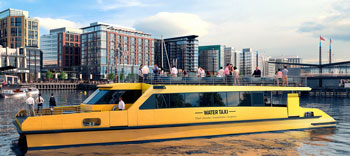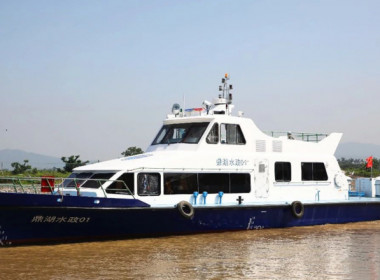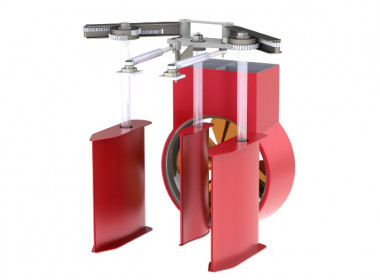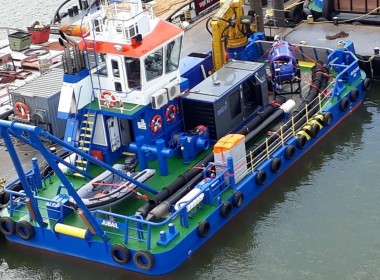VESSEL REVIEW | SWAMP – Lightweight USV for ultra-shallow-water applications

The Italian National Research Council’s Institute of Marine Engineering (Consiglio Nazionale delle Ricerche–Istituto di Ingegneria del Mare; CNR–INM) has introduced a new type of unmanned surface vehicle (USV) specifically designed for deployment in extremely shallow waters as well as in remote coastal environments.
The Shallow Water Autonomous Multi-purpose Platform (SWAMP) prototype was designed as a highly portable USV that boasts a modular assembly capable of housing any assortment of onboard sensors to suit specific types of research and survey missions.
SWAMP was developed to satisfy the need for an unmanned craft that can easily be deployed for accurate data gathering in environments where full-size, heavier vessels will have difficulty operating. These environments include shallow wetlands such as rivers, lakes, and marshes, which also require continuous monitoring and protection just like much larger and deeper bodies of water.
The craft’s designers seek to overcome some of the issues that are inherent in the operation of larger unmanned vessels in wetlands. Specifically, a large number of unmanned vessels have draughts of greater than one metre, making them impractical for use in such restrictive maritime environments. Although there are unmanned platforms that are smaller in size and therefore more capable of navigating in such environments, the limited available selection of sensors and equipment that these vessels can carry will often mean the survey data that they collect will not be as accurate.
The SWAMP prototype has a length of 1.23 metres, a hull height of 0.4 metres, and a design beam of 1.1 metres, though the beam can be adjusted to anywhere between 0.7 metres and 1.25 metres to accommodate certain sensors and equipment. With an antenna installed, the craft has a height of 1.1 metres and thus still capable of navigating in wetlands without disturbing existing features such as low-hanging vegetation.
A soft and flexible closed-cell HDPE foam sandwich construction was used for the USV’s hull to make it capable of withstanding limited impacts and remaining afloat while having no adverse effect on the surrounding environment. The foam-based hull also contributes to the craft’s lightweight construction, giving it a maximum displacement of only 38 kilograms and enabling it to operate in water depths of as low as 10 centimetres.
The lightweight hull is durable enough to accommodate a variety of sensor configurations totalling 20 kilograms. SWAMP’s total payload weight can be increased to 60 kilograms if needed, and although this will result in an increase in draught, the USV will still be capable of operating in water depths of just under 30 centimetres thanks in part to its reserve buoyancy.
SWAMP’s software architecture consists of commercial off-the-shelf components, making the craft itself considerably easier to operate and maintain compared to a larger unmanned survey platform. Also, the internal wiring was configured in such a way that only those wires that are used for power connections were retained, contributing to the simplicity of construction besides significantly reducing weight.
Equipped by a pump jet propulsion arrangement consisting of four azimuth thrusters that can each rotate a full 360 degrees, the USV can execute tight turns to enable effective manoeuvring in restrictive areas. The thrusters are totally integrated into the hull for improved safety and are designed to be used either as main propulsion or as manoeuvring units. The USV’s modular design means that the pump jets can be replaced with alternative propulsion units or even survey sensors should there be a need for additional tools for data gathering.
Power for the propulsion and the onboard sensors is supplied by a lithium-ion battery. The USV has its own fully-redundant guidance, navigation and control (GNC) system to enable fully autonomous operation.
| Shallow Water Autonomous Multi-purpose Platform (SWAMP) | |
| SPECIFICATIONS | |
| Type of vessel: | USV – Survey and research |
| Flag: | Italy |
| Owner: | Institute of Marine Engineering, Italian National Research Council |
| Operator: | Institute of Marine Engineering, Italian National Research Council |
| Designer: | Institute of Marine Engineering, Italian National Research Council |
| Builder: | Institute of Marine Engineering, Italian National Research Council |
| Hull construction material: | HDPE |
| Length overall: | 1.23 metres |
| Beam: | 1.1 metres |
| Draught: | 0.1 metres |
| Displacement: | 38 kilograms |
| Capacity: | 20 kilograms |
| Propulsion: | 4 x pump jets |
| Batteries: | Lithium-ion |
| Other electronics: | Guidance, navigation and control system |
| Type of fuel: | Battery power |









